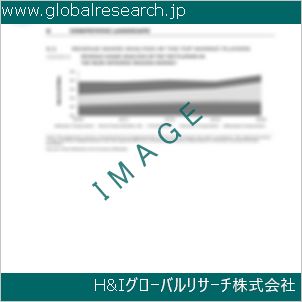Table of Contents
1 Industry Overview of Polyacrylic acid
1.1 Definition and Specifications of Polyacrylic acid
1.1.1 Definition of Polyacrylic acid
1.1.2 Specifications of Polyacrylic acid
1.2 Classification of Polyacrylic acid
1.3 Applications of Polyacrylic acid
1.3.1 Nuclear Application
1.3.2 Non-Nuclear Application
1.4 Industry Chain Structure of Polyacrylic acid
1.5 Industry Overview and Major Regions Status of Polyacrylic acid
1.5.1 Industry Overview of Polyacrylic acid
1.5.2 Global Major Regions Status of Polyacrylic acid
1.6 Industry Policy Analysis of Polyacrylic acid
1.7 Industry News Analysis of Polyacrylic acid
2 Manufacturing Cost Structure Analysis of Polyacrylic acid
2.1 Raw Material Suppliers and Price Analysis of Polyacrylic acid
2.2 Equipment Suppliers and Price Analysis of Polyacrylic acid
2.3 Labor Cost Analysis of Polyacrylic acid
2.4 Other Costs Analysis of Polyacrylic acid
2.5 Manufacturing Cost Structure Analysis of Polyacrylic acid
2.6 Manufacturing Process Analysis of Polyacrylic acid
3 Technical Data and Manufacturing Plants Analysis of Polyacrylic acid
3.1 Capacity and Commercial Production Date of Global Polyacrylic acid Major Manufacturers in 2023
3.2 Manufacturing Plants Distribution of Global Polyacrylic acid Major Manufacturers in 2023
3.3 R&D Status and Technology Source of Global Polyacrylic acid Major Manufacturers in 2023
3.4 Raw Materials Sources Analysis of Global Polyacrylic acid Major Manufacturers in 2023
4 Capacity, Production and Revenue Analysis of Polyacrylic acid by Regions, Types and Manufacturers
4.1 Global Capacity, Production and Revenue of Polyacrylic acid by Regions 2019-2024
4.2 Global and Major Regions Capacity, Production, Revenue and Growth Rate of Polyacrylic acid 2019-2024
4.3 Global Capacity, Production and Revenue of Polyacrylic acid by Types 2019-2024
4.4 Global Capacity, Production and Revenue of Polyacrylic acid by Manufacturers 2019-2024
5 Price, Cost, Gross and Gross Margin Analysis of Polyacrylic acid by Regions, Types and Manufacturers
5.1 Price, Cost, Gross and Gross Margin Analysis of Polyacrylic acid by Regions 2019-2024
5.2 Price, Cost, Gross and Gross Margin Analysis of Polyacrylic acid by Types 2019-2024
5.3 Price, Cost, Gross and Gross Margin Analysis of Polyacrylic acid by Manufacturers 2019-2024
6 Consumption Volume, Consumption Value and Sale Price Analysis of Polyacrylic acid by Regions, Types and Applications
6.1 Global Consumption Volume and Consumption Value of Polyacrylic acid by Regions 2019-2024
6.2 Global and Major Regions Consumption Volume, Consumption Value and Growth Rate of Polyacrylic acid 2019-2024
6.3 Global Consumption Volume and Consumption Value of Polyacrylic acid by Types 2019-2024
6.4 Global Consumption Volume and Consumption Value of Polyacrylic acid by Applications 2019-2024
6.5 Sale Price of Polyacrylic acid by Regions 2019-2024
6.6 Sale Price of Polyacrylic acid by Types 2019-2024
6.7 Sale Price of Polyacrylic acid by Applications 2019-2024
6.8 Market Share Analysis of Polyacrylic acid by Different Sale Price Levels
7 Supply, Import, Export and Consumption Analysis of Polyacrylic acid
7.1 Supply, Consumption and Gap of Polyacrylic acid 2019-2024
7.2 Global Capacity, Production, Price, Cost, Revenue, Supply, Import, Export and Consumption of Polyacrylic acid 2019-2024
7.3 USA Capacity, Production, Price, Cost, Revenue, Supply, Import, Export and Consumption of Polyacrylic acid 2019-2024
7.4 EU Capacity, Production, Price, Cost, Revenue, Supply, Import, Export and Consumption of Polyacrylic acid 2019-2024
7.5 China Capacity, Production, Price, Cost, Revenue, Supply, Import, Export and Consumption of Polyacrylic acid 2019-2024
7.6 Japan Capacity, Production, Price, Cost, Revenue, Supply, Import, Export and Consumption of Polyacrylic acid 2019-2024
8 Major Manufacturers Analysis of Polyacrylic acid
8.1 Manufacturer One
8.1.1 Company Profile
8.1.2 Product Picture and Specifications
8.1.2.1 Type I
8.1.2.2 Type II
8.1.2.3 Type III
8.1.3 Capacity, Production, Price, Cost, Gross and Revenue
8.1.4 Contact Information
8.2 Manufacturer Two
8.2.1 Company Profile
8.2.2 Product Picture and Specifications
8.2.2.1 Type I
8.2.2.2 Type II
8.2.2.3 Type III
8.2.3 Capacity, Production, Price, Cost, Gross and Revenue
8.2.4 Contact Information
8.3 Manufacturer Three
8.3.1 Company Profile
8.3.2 Product Picture and Specifications
8.3.2.1 Type I
8.3.2.2 Type II
8.3.2.3 Type III
8.3.3 Capacity, Production, Price, Cost, Gross and Revenue
8.3.4 Contact Information
8.4 Manufacturer Four
8.4.1 Company Profile
8.4.2 Product Picture and Specifications
8.4.2.1 Type I
8.4.2.2 Type II
8.4.2.3 Type III
8.4.3 Capacity, Production, Price, Cost, Gross and Revenue
8.4.4 Contact Information
8.5 Manufacturer Five
8.5.1 Company Profile
8.5.2 Product Picture and Specifications
8.5.2.1 Type I
8.5.2.2 Type II
8.5.2.3 Type III
8.5.3 Capacity, Production, Price, Cost, Gross and Revenue
8.5.4 Contact Information
…
9 Marketing Trader or Distributor Analysis of Polyacrylic acid
9.1 Marketing Channels Status of Polyacrylic acid
9.2 Traders or Distributors with Contact Information of Polyacrylic acid by Regions
9.3 Ex-work Price, Channel Price and End Buyer Price Analysis of Polyacrylic acid
9.4 Regional Import, Export and Trade Analysis of Polyacrylic acid
10 Industry Chain Analysis of Polyacrylic acid
10.1 Upstream Major Raw Materials Suppliers Analysis of Polyacrylic acid
10.1.1 Major Raw Materials Suppliers with Contact Information Analysis of Polyacrylic acid
10.1.2 Major Raw Materials Suppliers with Supply Volume Analysis of Polyacrylic acid by Regions
10.2 Upstream Major Equipment Suppliers Analysis of Polyacrylic acid
10.2.1 Major Equipment Suppliers with Contact Information Analysis of Polyacrylic acid
10.2.2 Major Equipment Suppliers with Product Pictures Analysis of Polyacrylic acid by Regions
10.3 Downstream Major Consumers Analysis of Polyacrylic acid
10.3.1 Major Consumers with Contact Information Analysis of Polyacrylic acid
10.3.2 Major Consumers with Consumption Volume Analysis of Polyacrylic acid by Regions
10.4 Supply Chain Relationship Analysis of Polyacrylic acid
11 Development Trend of Analysis of Polyacrylic acid
11.1 Capacity, Production and Revenue Forecast of Polyacrylic acid by Regions and Types
11.1.1 Global Capacity, Production and Revenue of Polyacrylic acid by Regions 2024-2029
11.1.2 Global and Major Regions Capacity, Production, Revenue and Growth Rate of Polyacrylic acid 2024-2029
11.1.3 Global Capacity, Production and Revenue of Polyacrylic acid by Types 2024-2029
11.2 Consumption Volume and Consumption Value Forecast of Polyacrylic acid by Regions, Types and Applications
11.2.1 Global Consumption Volume and Consumption Value of Polyacrylic acid by Regions 2024-2029
11.2.2 Global and Major Regions Consumption Volume, Consumption Value and Growth Rate of Polyacrylic acid 2024-2029
11.2.3 Global Consumption Volume and Consumption Value of Polyacrylic acid by Types 2024-2029
11.2.4 Global Consumption Volume and Consumption Value of Polyacrylic acid by Applications 2024-2029
11.3 Supply, Import, Export and Consumption Forecast of Polyacrylic acid
11.3.1 Supply, Consumption and Gap of Polyacrylic acid 2024-2029
11.3.2 Global Capacity, Production, Price, Cost, Revenue, Supply, Import, Export and Consumption of Polyacrylic acid 2024-2029
11.3.3 USA Capacity, Production, Price, Cost, Revenue, Supply, Import, Export and Consumption of Polyacrylic acid 2024-2029
11.3.4 EU Capacity, Production, Price, Cost, Revenue, Supply, Import, Export and Consumption of Polyacrylic acid 2024-2029
11.3.5 China Capacity, Production, Price, Cost, Revenue, Supply, Import, Export and Consumption of Polyacrylic acid 2024-2029
11.3.6 Japan Capacity, Production, Price, Cost, Revenue, Supply, Import, Export and Consumption of Polyacrylic acid 2024-2029
12 New Project Investment Feasibility Analysis of Polyacrylic acid
12.1 New Project SWOT Analysis of Polyacrylic acid
12.2 New Project Investment Feasibility Analysis of Polyacrylic acid
13 Conclusion of the Global Polyacrylic acid (CAS 9003-1-4) Industry 2024 Market Research Report
| ※参考情報 ポリアクリル酸は、アクリル酸の重合によって得られる合成高分子化合物であり、その化学構造は単位構造がアクリル酸のモノマーで構成されています。ポリアクリル酸は、CAS番号9003-01-4としても知られています。この化合物は、主に水溶性のポリマーであり、生体適合性があるため、さまざまな分野で幅広く利用されています。 ポリアクリル酸の特徴の一つは、その高い水溶性です。水に容易に溶解し、ゲル状の物質を形成する特性があります。また、pHに応じてその性質が変化するため、酸性またはアルカリ性の条件下での用途に適しています。今回のポリアクリル酸は負の電荷を持つため、カチオン性の物質と相互作用し、様々な物質と複合体を形成する能力があります。また、分子量や重合度によって物理的性質が異なるため、用途に応じて選択することができます。 ポリアクリル酸にはいくつかの種類があります。主なものには、低分子量のポリアクリル酸、高分子量のポリアクリル酸、架橋型ポリアクリル酸などがあります。低分子量のポリアクリル酸は、主に溶媒中で利用され、化粧品や医療用途において増粘剤やエモリエント剤として使用されます。高分子量のポリアクリル酸は、特にゲルを形成する能力が高いため、ドラッグデリバリーシステムやバイオマテリアルとして注目されています。架橋型ポリアクリル酸は、物理的な強度や熱安定性が向上しており、粘着剤やコーティング材、吸収剤などに利用されています。 ポリアクリル酸の用途は非常に多岐にわたります。まず、化粧品業界では、保湿クリームやローションにおいて重要な成分として利用され、肌に潤いを与える効果があります。また、シャンプーやコンディショナーにおいても、髪の毛に対する滑らかさやツヤを向上させるための添加剤として使用されます。医療分野においては、薬物の徐放性を高めるためのキャリアとして利用されることが多く、特に抗がん剤の投与や遺伝子治療におけるドラッグデリバリーシステムの構成成分として注目されています。 さらに、農業分野でもポリアクリル酸が利用されることがあります。土壌改良剤や水分保持剤として、乾燥地帯での作物栽培や水の効率的利用に寄与しています。このように、ポリアクリル酸はさまざまな業界での機能性材料としての可能性を秘めており、今後の研究によって新たな用途が見出されることが期待されています。 最近の研究では、ポリアクリル酸を利用したナノ材料の開発や、エネルギー関連分野での利用も進んでいます。例えば、水素貯蔵やリチウムイオン電池の電解質としての応用が期待されています。また、環境分野では、ポリアクリル酸の特性を活かした水処理技術や廃棄物処理システムの開発も進行中です。 関連技術としては、ポリアクリル酸を基盤とした複合素材やナノコンポジットの開発が挙げられます。これにより、ポリアクリル酸の特性を活かした高機能性材料の製造が可能となっています。また、他の高分子材料や天然物質との共重合により、特異な機能を付与する技術も研究されています。 ポリアクリル酸は、環境に優しい材料としての特性も持つため、持続可能な社会の実現に向けた取り組みにも寄与することが期待されています。生分解性ポリアクリル酸の開発や、再生可能資源からの製造技術の確立が進められており、これにより環境負荷を軽減する材料としての評価が高まっています。 総じて、ポリアクリル酸は、その特異な化学的性質と多様な応用可能性により、現代の技術や産業において重要な役割を果たす高分子化合物であると言えます。今後の研究や技術革新が進む中で、新たな用途や開発が期待されており、ますます注目が集まる分野となるでしょう。ポリアクリル酸の進化とその応用範囲の拡大は、私たちの生活や産業のさまざまな側面に影響を与える可能性があります。 |
❖ 免責事項 ❖
http://www.globalresearch.jp/disclaimer












